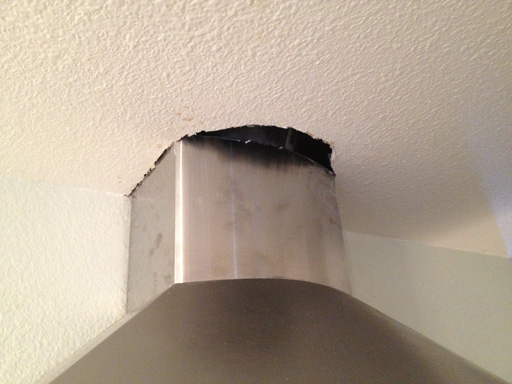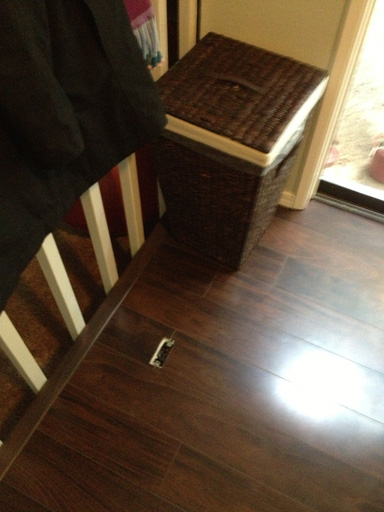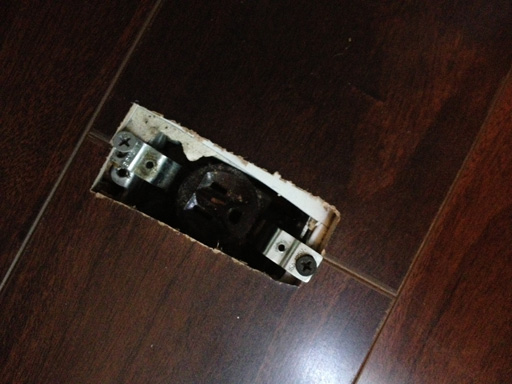Welcome to Part 2 of this series on refinishing a wood bathroom vanity.
Catch up on Part 1 – Preparation & Stripping here.
Yesterday, we smeared stripping gel onto the vanity’s surface and left it to work for 24 hours. Next step: scraping and sanding the gel stripper and the varnish off the cabinet faces in preparation for painting. This step is messy and time consuming: it took me about 40 minutes to prepare each individual cabinet door for painting.
Plan to spend at least a few hours scraping and sanding, depending on the size of your vanity. Hang in there: this step is essential for getting your paint (or stain) to coat evenly and beautifully!
Cabinet Scraping & Sanding Supply List
Here’s a handy list of every tool I used to scrape and sand my wood vanity:
Paint Scraper
Paint scrapers are cheap but essential – you’ll need at least one to properly remove the stripping gel and varnish from your cabinet faces.
Handheld Corner Sander
You’ll need a “palm sander” for sanding the cabinet faces prior to painting. I’ve tried, and do not recommend, trying to sand by hand.

My Black & Decker mouse corner sander has helped refinished both my kitchen and my bathroom cabinets.
Sanding Pads
The sandpaper that goes with corner sanders is special: they’re shaped like little pressing irons and the velcro backings are designed to hold them onto the sander. I used both 80 grit pads (for varnish removal) and 220 grit pads (for lighter touchups). You’ll need multiple pads, since they get gunked up. I think I used 4-5 pads from the 80 grit set and 3-4 from the 220 set.
Paper Towels
You’ll need paper towels for wiping away used stripping gel and varnish.
Protect Thyself
Skipping this step is likely to leave you with debris in your eyes and lungs (which you will cough out over the next several days). Here’s my el-cheapo solution, which has served me well for a few projects now:
- High school chemistry class goggles
- Earplugs
- Simple 3M brand dust mask
This particular style of dust mask is nice because it has two separate elastic bands, one for going over your ear and one for going under. This lets it avoid all my cartilage piercings. :) It pinches nicely over the nose and somehow breathing into it does not fog the goggles.
The high school chemistry style goggles are much preferred over glasses due to the nature of dust floating everywhere.
Not shown are my earplugs, which I HIGHLY recommend when working with power sanders and shop vacs. If something’s going to damage my hearing, it better be concerts and not power tools.
It’s not 100% perfect – there’s a small gap between the facemask and the goggles, but it works 99.9% of the time and was super cheap compared to some of the more serious protective masks I’ve seen for sale.
Scraping off the Citristip
Using your handheld paint scraper, push firmly and work with the grain of the wood. I usually go over an area at least a few times before moving on. Remove the clumpy Citristrip/varnish/paint bits with a paper towel. It’s important to remove all of the Citristrip and varnish before moving onto sanding: if you don’t, the leftover stripping gel will just crud up your sanding pad.

You should remove the cabinet mounting hardware before beginning this step – I was so eager to start scraping that I removed it later, after it got full of Citristrip. Boo.
Sanding
Start with rough sandpaper (I use 80 grit for this step) to sand off whatever varnish and gel still remains. I highly recommend my Black & Decker electric “mouse” sander.
This whole process takes about 1 hour for a single door, 30-40 minutes for a drawer. This was tedious and laborious and I split up the sanding over two real-life days.
Arms tired yet? Part 3 demonstrates priming in preparation for painting!


























